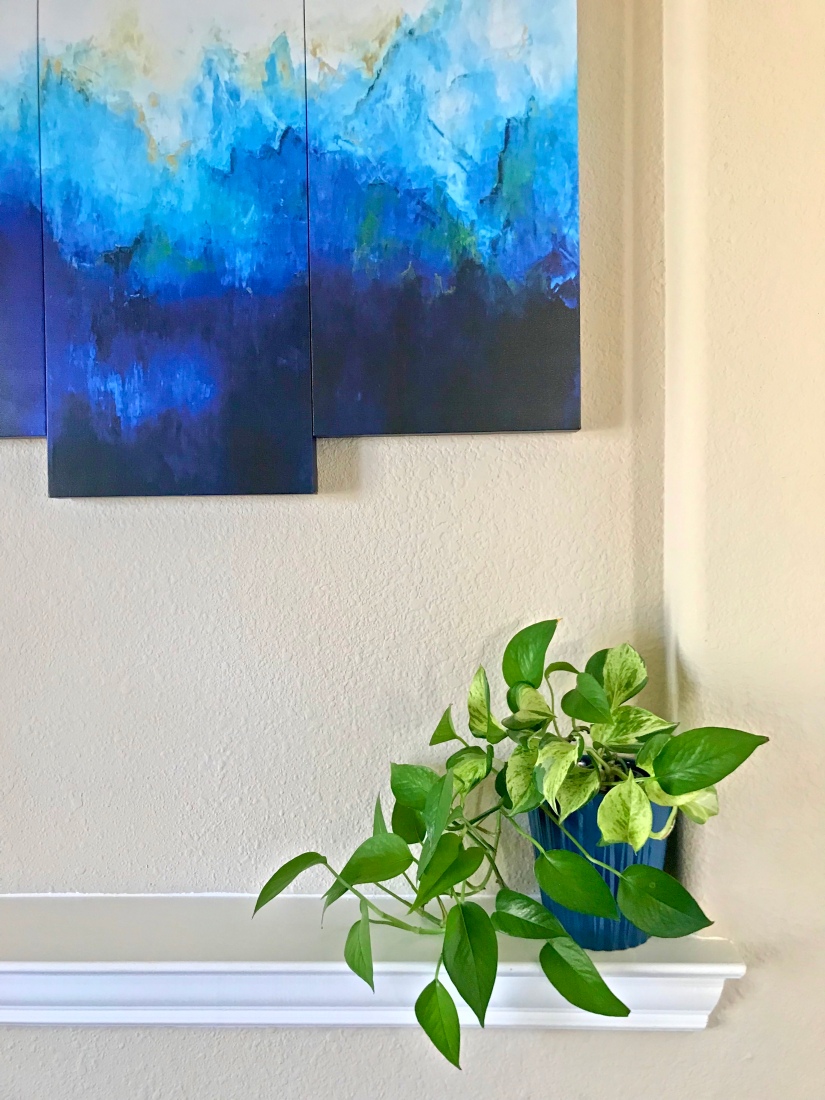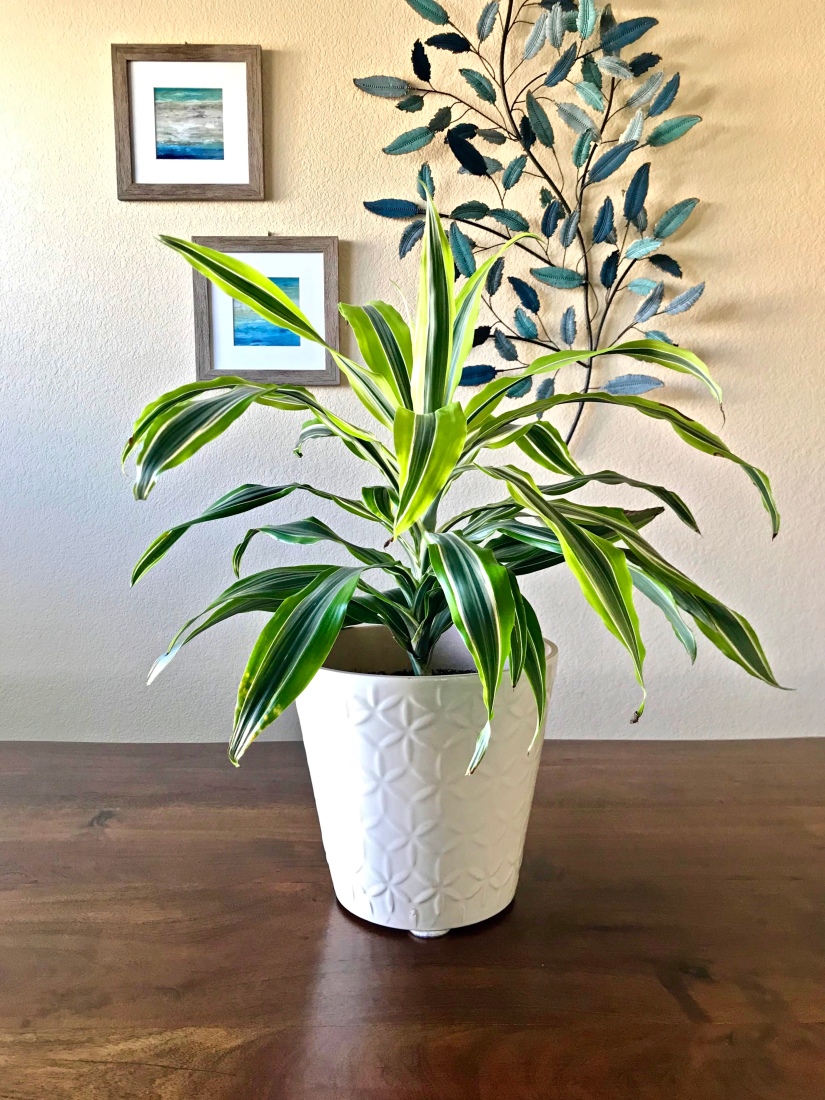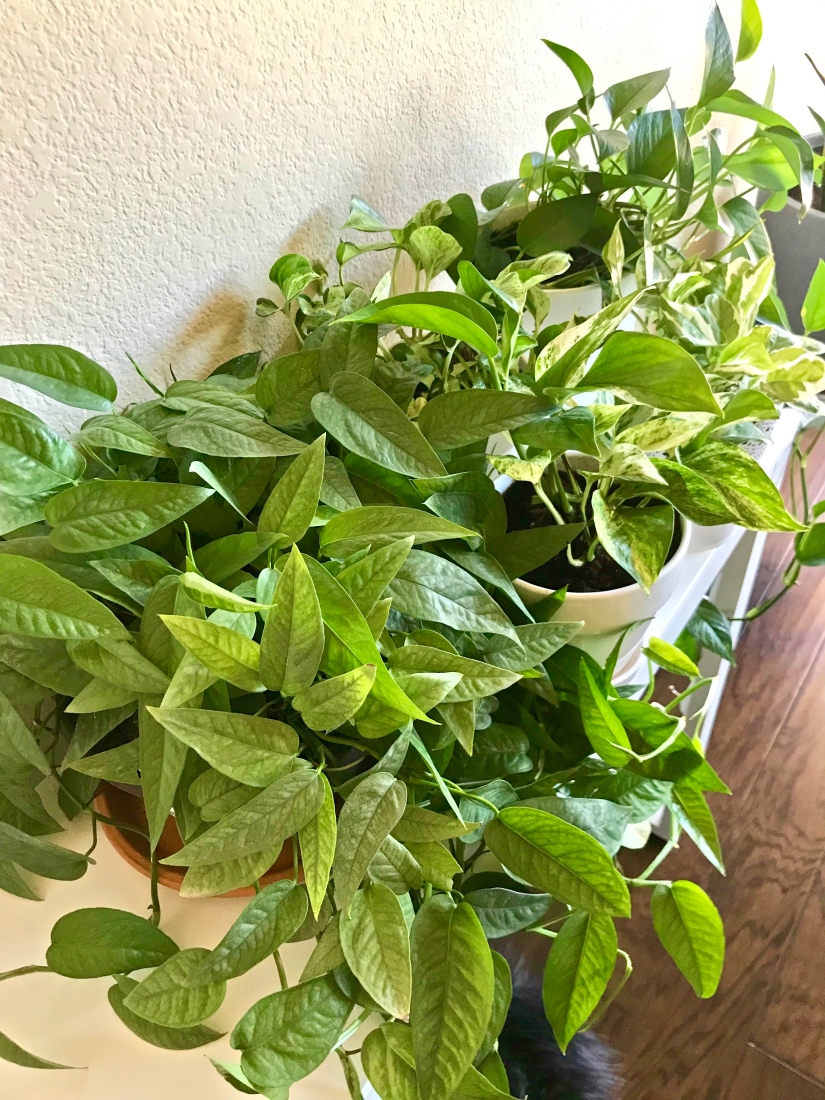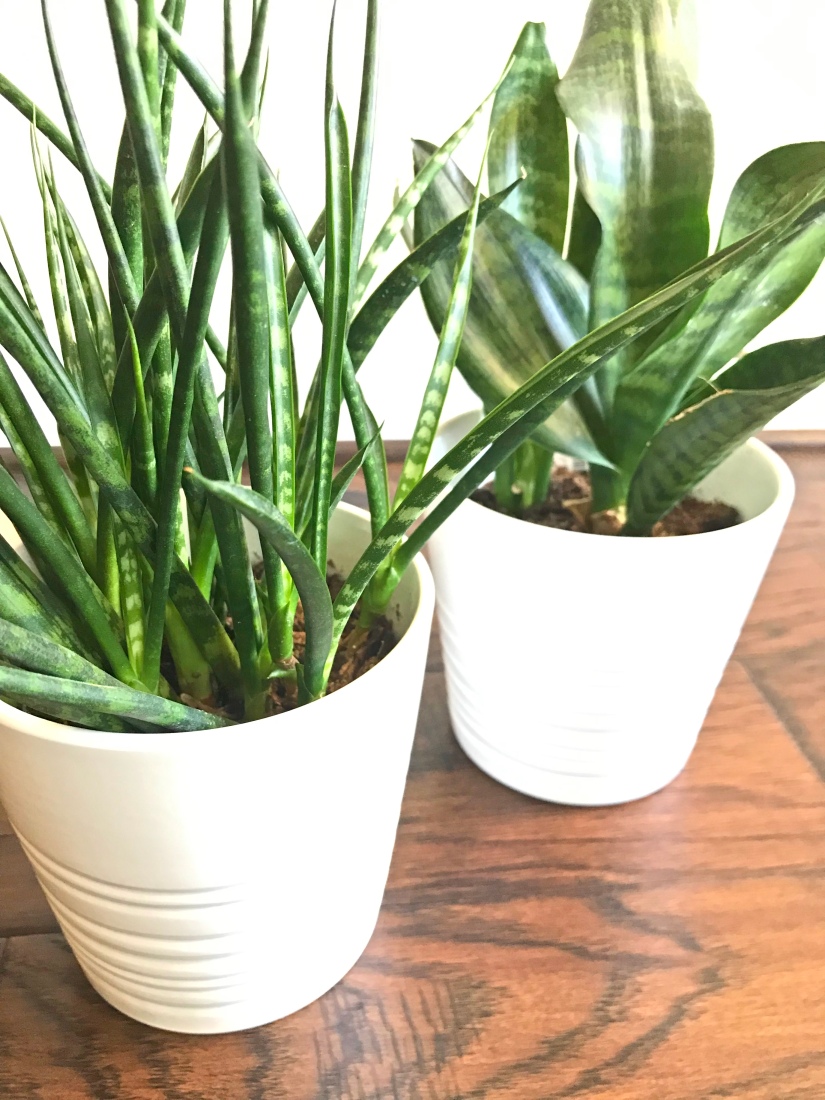
Houseplants are currently having a moment on Instagram. Just check out hashtags like #urbanjungle, #plantshelfie, or #houseplantclub and you’ll see hundreds of thousands of beautiful, lush plants. While no one can deny the beauty and serenity that plants add to a space, it’s their many health benefits that make them worth the time investment.
In 1989, NASA conducted it’s famous Clean Air Study to determine which common houseplants had the ability to remove toxins from the air. 19 plants were discovered to have various degrees of “phytoremediation,” or the ability to remove harmful gasses such as benzene, formaldehyde, trichloroethylene, and xylene. Beyond the Clean Air Study plants, all houseplants absorb carbon dioxide and release oxygen. According to the EPA, the air inside most of our homes (and offices, and schools) is 2-5 times more polluted than the air outside. Studies have also shown that beyond air purification, indoor plants naturally increase air humidity, reduce stress levels, improve concentration and productivity, and boost your mood. If that’s not reason enough to bring the outdoors into your home, I don’t know what is!

HOW TO CHOOSE PLANTS
It is very tempting to pick out the most striking plant in your local nursery, bring it home, and hope for the best. Often we tend to pick a plant solely on the basis of our decor aesthetics, the space we want to put it, or the beautiful pot in which we want it to live. However, a little preparation and research can go a long way in helping us become successful indoor plant growers. One of the biggest things to remember is not to choose a space for the plant, but choose a plant that suits the space you have.
LIGHTING: Natural light is essential to plants. Plants use natural sunlight to make food in their leaves in a process called photosynthesis. The plant traps energy from the sunlight with the chlorophyll (green pigment) in its leaves, takes up water from its roots, and pulls carbon dioxide from the air. Within the leaves, the plant uses the trapped solar energy to convert the water and carbon dioxide into glucose which it uses as food.
Before you bring a plant home, it’s important to be aware of what kind of light your home can provide.
Consider these questions:
- Which directions do my windows face?
- What is the overall light level in the room (low, medium, bright)?
- How much direct sunlight is available in the spot that I want the plant to live?
- How much indirect sunlight is available in the spot that I want the plant to live?
While you can easily manipulate the amount of water and humidity a plant receives, your home has a fixed amount of lighting (unless you want to invest in grow lights).
For example, if you have several south-facing windows, you most likely have plenty of bright, indirect sunlight. If you place the plant right next to the window where actual sun rays would hit the leaves during the day, that would be bright, direct light. Knowing what lighting you have will help you to choose a plant that will thrive in your home. In general, most houseplants will require medium to bright indirect sunlight. Succulents and cacti will require bright direct light and many tropical plants will need a combo of bright direct and indirect light. When in doubt, check the plant care label at the nursery or do a quick google search before bringing a plant home.
There are some varieties of plants that can live in low light conditions (think a north facing window, a room with small windows, or windows that have awnings). However, while a plant may tolerate low lighting conditions, they will likely not grow as well as they would with more indirect light exposure.
Remember that light is essential for the plants to make food and without it, they starve. How long does anyone thrive on a calorie-restricted diet? Not long!
TOXICITY: Unless you’re growing herbs indoors, assume that all houseplants shouldn’t be consumed! Some plants are known to be toxic if consumed and some are irritating to the skin. Always check the toxicity level of a plant before bringing it into a home with young children or pets.
For example, Dieffenbachia (common name Dumb Cane) can cause drooling, swelling, vomiting, and intense oral pain if consumed and skin irritation if a broken leaf makes contact with the skin . Ficus Elastica (common name Rubber Tree Plant) has a milky sap that is used in industrial rubber production. However, the sap is very irritating to the skin and is toxic if consumed by animals.

AT THE NURSERY
Inspect the plants!
Check that the leaves look healthy and don’t have too many brown/black spots. Check the underside of the leaves, the leaf nodes (where the leaves connect to the stem), and top layer of soil for any pests (spider mites, mealy bugs, and fungus gnats are the most common indoor house pests).
If you’re able, check that the roots look healthy as well, as mushy roots denote root rot which will quickly kill the entire plant. Likewise, check that the soil isn’t soggy. This is a common issue with houseplants purchased at Big Box retailers, not so much with nurseries. They water liberally with a hose leading to overly watered plants. If it’s the only plant in that variety and the soil is like mud, be prepared to repot it into fresh soil when you get home.

AT HOME
FIRST DAYS AT HOME: When you first bring a plant home from the nursery, it’s going to need some time to acclimate to it’s new environment. It’s best to place it where it gets the light it requires, leave it in it’s nursery pot, and let it be! If the soil is very dry, go ahead and water it. The change in environment may cause a few leaves to turn yellow or drop. It’s not a sign that the plant is dying, it’s just part of the acclimation process.
LOCATION: As long as plants receive enough light, you’re able to place the plant wherever you’d like. They look beautiful in raised plant stands, on tables, shelves, and hanging from the ceiling
. If you have children or pets, you may want to install some shelves
on the wall so the plants can sit out of reach. If you have cats that like to jump and climb, you’ll need think like a cat! Place plant shelves or hanging plants in areas that the cat doesn’t have leverage to jump from a counter or other piece of furniture to snag them.
WATERING/HUMIDITY: Overwatering is the number one killer of houseplants! It’s crucial to understand your plant’s unique water needs. In general, most houseplants like the soil to dry out between waterings. Depending on the soil mixture, the lighting, and the time of year, you’ll need to water most houseplants once a week to once every 10 days or so. While there are fancy soil moisture meters that you can buy, the best moisture meter is your finger! Stick your finger into the soil near the base of the plant down to your knuckle. If the soil feels dry, then water your plant. If it still feels moist, wait another day or two before watering.
For best watering practices, add water to the soil until it begins to drain out of the drainage holes at the bottom of the pot. Let the pot sit for a few minutes and then tip out any extra water from the pot and/or drainage saucer. Most tap water has too much chlorine for houseplants and will cause brown tips on the foliage. You can fill your watering can
and let it sit out for 24 hours to allow some of the chlorine to evaporate, use filtered water, distilled water, or rainwater if possible.
Most common houseplants are well adapted to average household humidity 40-50%. Some plants such as ferns require daily misting , while other more tropical plants such as Calatheas will require the investment in an automated humidifier
. It’s a good idea to look up a plant’s humidity needs before bringing it home.
POTTERY: Houseplants need to be in pots with drainage holes. If the water doesn’t have access to drain out of the soil, the roots will become soggy, causing root rot. If you dislike the look of the nursery pot the plant came in, place the nursery pot on top of a plastic drainage saucer inside of a cover pot of your choice. You can use almost anything as a cover pot from ceramic pottery, to terra cotta
, to woven baskets
as long as you use a plastic drainage saucer to prevent any water from leaking out. Don’t worry too much about repotting the plant into a bigger pot right away. Most houseplants prefer to be a little “root bound.” You’ll know it’s time to size up the pot when you can see roots poking out of the drainage holes. Then you can repot your plant into a new pot with adequate drainage that is about 2” bigger than it’s current pot. It’s best to do any repotting in early spring as to not disrupt the growth cycle.
5 Beginner-Friendly Plants:
1. Pothos (Epipremnum aureum)

These plants are very easy to care for. They prefers medium-bright indirect light (but are low-light tolerant) and like the soil to dry out between waterings. They are very fast growing and the trailing vines can be left to hang down or trained to climb up a moss pole, allowing the leaves to grow larger as they grow upward. Leaves from the pothos can be easily propagated in water or soil to produce a new plant. They come in many variations from the standard Golden Pothos to the more exotic Marble Queen or tropical Cebu Blue. (Please note: Pothos are toxic to humans and pets if consumed). PS. This genus of plants is my absolute favorite, if you can’t already tell. 🙂
2. Snake Plant (Sansevieria)
Snake Plants come in many varieties that vary in size and shape. What makes the Snake Plant a stellar houseplant for beginners is that it’s tolerant of many lighting condition and it needs very little water. While it will grow best in medium-bright indirect light, it will tolerate low light. Most varieties are fairly slow-growing and don’t need to be repotted very often. Allow the soil to thoroughly dry between waterings and cut back waterings to every 3-4 weeks during winter. (Please note: Snake Plants are toxic to humans and pets if consumed).
3. Spider Plant (Chlorophytum comosum)
Spider Plants are wonderful houseplants for homes with small children or plant-chewing pets because it is considered non-toxic. It prefers medium-bright indirect light and likes the soil to dry out between waterings. It grows quickly and shoots out stems that produce baby spider plants that can be snipped off and planted in a new pot of soil. This plant is highly sensitive to tap water, so make sure to use distilled, highly filtered, or rain water instead.
4. Dracaenas
Dracaena plants come in many varieties that can grow on a table top and some that can grow up to 6 feet tall indoors. Most varieties prefer medium-bright indirect light. Dracaenas like to have their soil stay slightly moist but never soggy, so don’t allow the soil to dry out completely between waterings. (Please note: Dracaenas are toxic to pets if consumed).
5. ZZ Plant (Zamioculcas zamiifolia)
ZZ Plants have been deemed “tough as nails” in the houseplant community. Their leaves stay glossy all year long and while they are slow-growing, they do grow new shoots during the spring. ZZ Plants can grow in a variety of lighting conditions, but prefer medium to bright indirect light. In low light conditions, it will slow it’s growth and the stems will stretch out and become “leggy.” This plant stores water in it’s thick, tuberous rhizomes, so it’s important not to overwater them. Water these plants every 2-3 weeks during spring/summer and every 3-4 weeks during winter. (Please note: ZZ Plants are toxic to humans and pets if consumed).
*I am not a botanist, nor do I play one on TV! When bringing a new plant into your home, please take the time to research the plant’s specific needs. While I do have children and a dog, they are all older and know not to chew on any of my houseplants. Please be aware of your children and pets and err on the side of caution when bringing plants home plants that might be toxic. That said, if your child or pet does chew on any houseplant, toxic or not, please contact Poison Control! You can read my full disclaimer here.
Full disclosure: This blog post contains some affiliate links. Meaning, basically, if you make a purchase from any of these links it doesn’t cost you anything extra, but I may make a little money. So thank you in advance for supporting my family. I am not sponsored by any products, brands, or plants featured.
